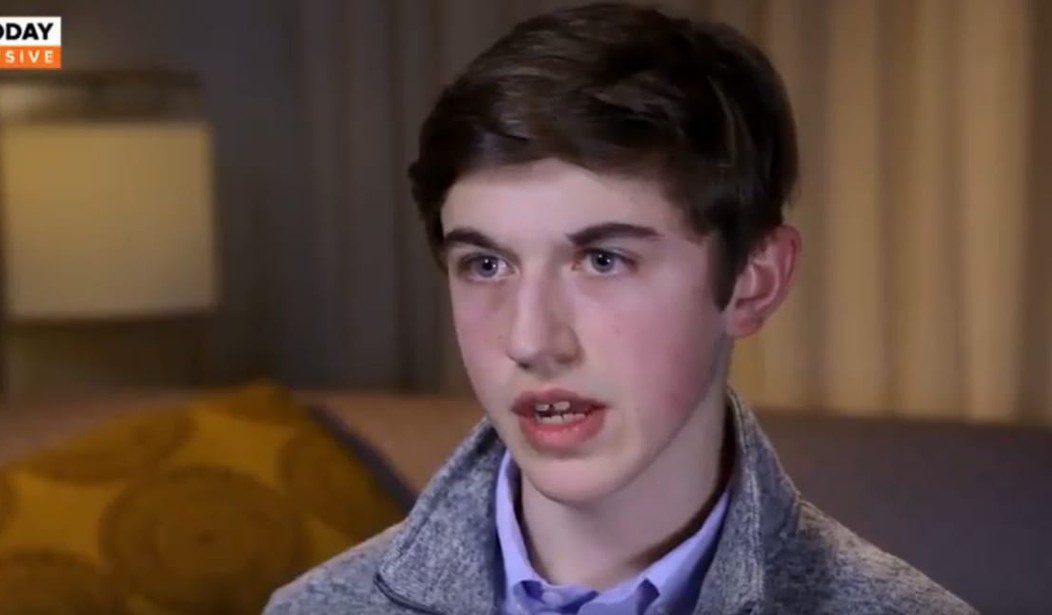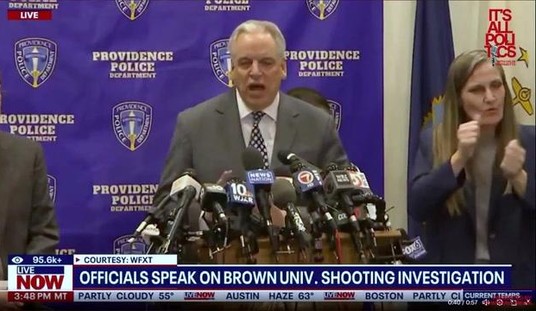As more video of the post-March for Life altercation between Covington Catholic High School students (especially Nick Sandmann), Native American Nathan Phillips, and young black men with the Black Hebrew Israelites came to light this week, many media and national figures distanced themselves from the early ugly attacks on Sandmann (although many tragically still haven’t). The Southern Poverty Law Center (SPLC)’s Teaching Tolerance project doubled down, however, seeking to teach a lesson.
On Friday, Teaching Tolerance senior writer Cory Collins warned that hearing “both sides” of this story is not enough. He suggested that because Sandmann — a teenager so roundly mocked and villainized by the media that his parents have hired a lawyer to sue for libel or slander — had unique privilege in this situation, America’s teachers should focus on Phillips’s experience as a teaching moment about the oppression of Native Americans.
“Reading Sandmann’s and Phillips’ accounts side-by-side, it may seem easy to recognize the power imbalances at play in the confrontation. As a white, non-Latinx teenage boy with a private school education and access to a PR firm, Sandmann holds far more structural power than Phillips, even if he is only 16,” Collins wrote. “For many who read about the event, that power granted Sandmann more access to the benefit of the doubt and a presumption of good intentions.”
This claim is laughable on its face. The original video went viral exactly because Sandmann — wearing a MAGA hat — seemed to disrespect Phillips. The “presumption” was 100 percent against him. Even strong conservatives like National Review‘s Alexandra DeSanctis admitted to having rushed to conclusions when judging the boy’s intentions harmful.
Nevertheless, since the 16-year-old boy allegedly benefitted from structural privilege, Collins argued that teachers should use this opportunity to “discuss the historical and contemporary impact of systemic racism, sexism, homophobia and more. Learning about settler-colonialism and white privilege can help students understand how these power systems developed and how they continue to shape common narratives today.”
Then Collins added insult to injury, suggesting that the media treated Sandmann better than boys of color. “To see these structures at work, students might compare the media’s representation of Sandmann to representations of teenage black or Latinx boys,” he wrote.
Do mainstream media outlets rush to judgment against black or Latino boys in the same way they rushed to judge this Covington Catholic student for smirking? If so, Collins provided zero examples.
Furthermore, the Teaching Tolerance writer chided Americans for worrying about the reputational damage done to Sandmann.
“We should know that being the victim of racism is more harmful than being accused of racism, but we’re talking more about how this most recent story has affected Sandmann than how it’s affected Phillips,” Collins argued. Yet Phillips has received far more positive press coverage, and Sandmann has been vilified. Perhaps the original event — a smirk and a few “tomahawk chops” — insulted the Native American, but his life has not been destroyed by a deluge of fake news.
In fact, Sandmann’s MAGA hat has inspired think pieces in major media outlets such as The Washington Post about the symbolic evil of the MAGA hat itself. If anyone has experienced the opposite of the “benefit of the doubt” in the media, it’s this Covington Catholic boy.
Yet Collins’ article on Friday was not the first time Teaching Tolerance targeted Sandmann. On Tuesday, Amanda Morris, associate professor of multiethnic rhetorics at Kutztown University of Pennsylvania, used the Covington Catholic student to discuss “Settlement-Colonialism.”
“A crucial aspect of social justice education is learning to differentiate between intent and impact. For students with privilege, particularly, this means understanding where and how their own actions align with or amplify power structures that benefit them while oppressing others,” Morris wrote.
“The pain, anguish and anger expressed by Indigenous writers, artists, activists, scholars and musicians responding to the video is real and irreparable,” she argued, referencing the original misleading viral video. “Reminders of abuse at Indian boarding schools, recollections of historical domination by Christian churches—particularly the Catholic missions in California—over Native peoples, and other historical traumas were being relived on social media throughout the weekend.”
Morris chose to make this argument after more video had already emerged showing that Sandmann’s smirk was far from the whole story. Furthermore, she fanned the flames of anti-Catholic outrage by linking this video to the history of Catholic missions in California, suggesting ongoing “historical traumas” perpetrated by those evil Catholics.
Morris insisted that a full understanding of the history of Native American oppression is necessary for students to “recognize the impact of the confrontation on the steps of the Lincoln Memorial.”
Native Americans have indeed faced discrimination, violence, broken treaties, and many injustices at the hands of “settler-colonizers,” and Morris used this situation to touch upon this tragic history. But legitimizing the fake outrage over the Covington Catholic boys in this manner is disgusting.
Just because Native Americans suffered in history and Phillips is a Native American does not justify the false demonization of a Catholic teen for the crime of smirking while being white and wearing a MAGA hat. If Native Americans were outraged at the video, they should watch other videos to grasp the whole story, rather than wallowing in the self-pity of historical tragedy.
This incident is not a “teachable moment” for the oppression of Native Americans, but a “teachable moment” about the bias of the media and its rush to find outrage at the slightest provocation. The lawyers representing Covington Catholic boys and Sandmann, in particular, should include the SPLC and Teaching Tolerance in any litigation going forward.
Follow the author of this article on Twitter at @Tyler2ONeil.









Join the conversation as a VIP Member